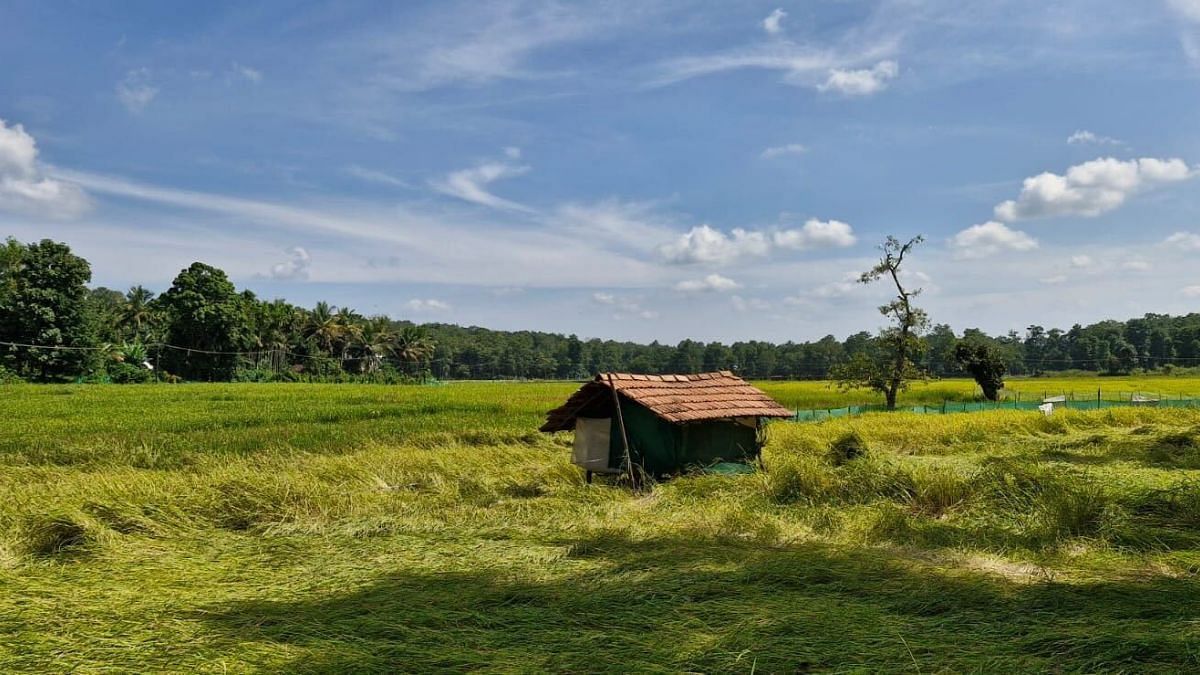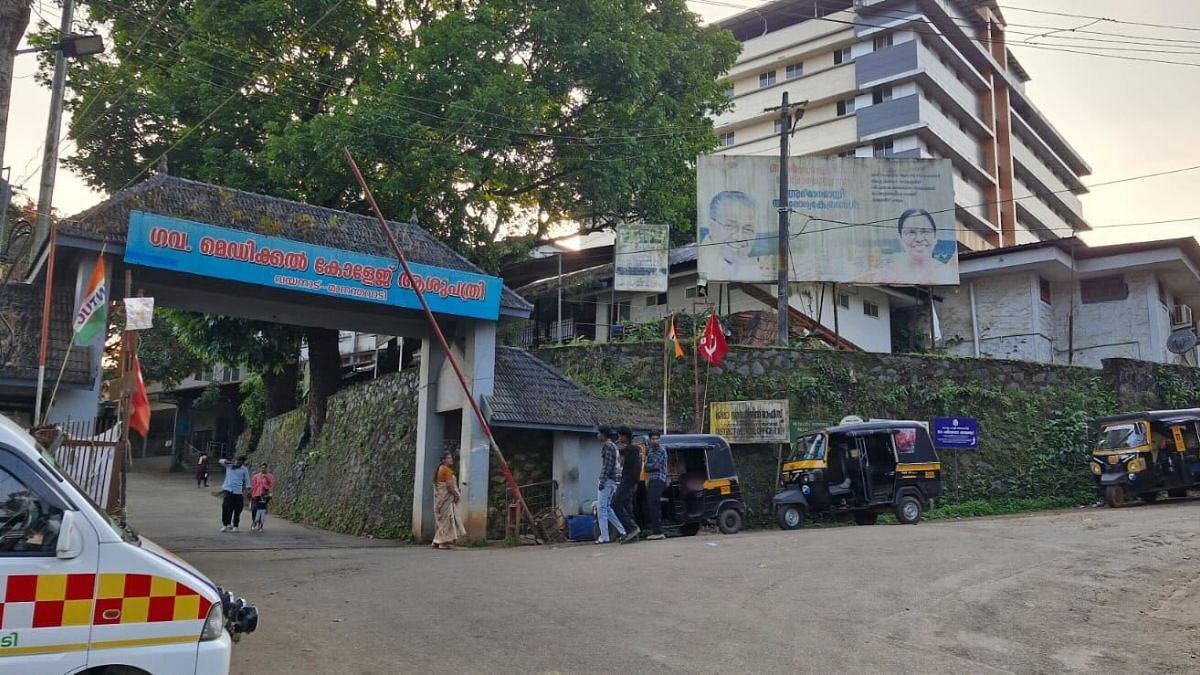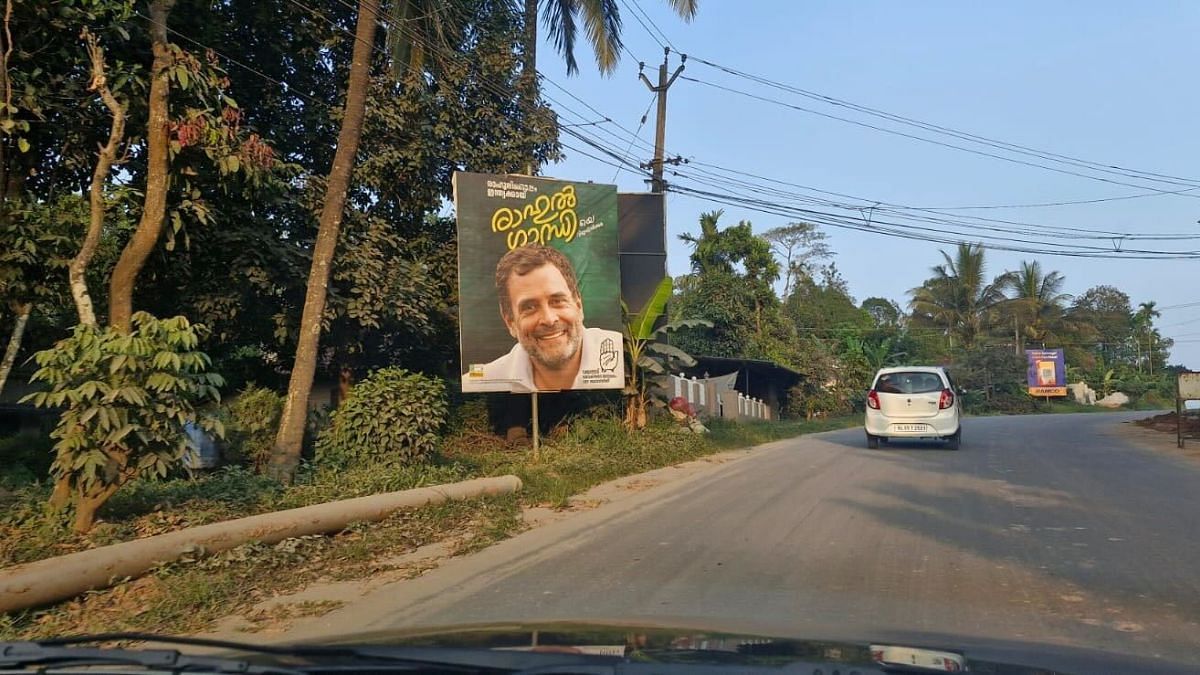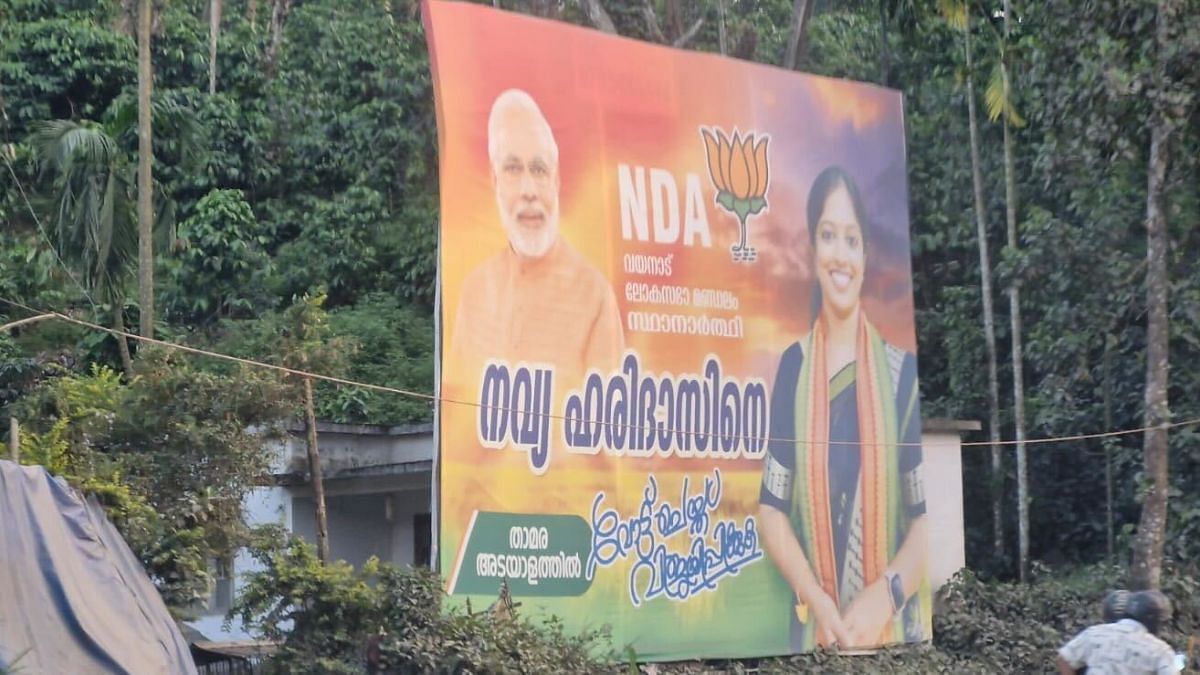“On average, around 10 emergency cases per day are sent to Kozhikode. We are not equipped to handle major emergencies or serious accident cases,” a doctor at Kalpetta General Hospital tells ThePrint on condition of anonymity.
His colleague from the neighbouring municipality of Mananthavady says that at least two-three cases a day from there have to be sent to Kozhikode.

While Kerala has some of the best human development indicators compared to the rest of India, the reality is different in Wayanad.
The devastating landslides in August that claimed over 400 lives in the district re-emphasised the dire need for a medical college or super-speciality hospital—where all healthcare can be found under the same roof.
The people of Wayanad now have their hopes pinned on the upcoming Lok Sabha bypolls, scheduled for 13 November. They hope that the next MP will be able to help address at least three of its most pressing, and largely intertwined, problems: the lack of a proper medical college, transport woes, including the ban on nighttime travel on a major highway, and constant human-animal conflicts (HAC).
Since 2019, Congress leader Rahul Gandhi has represented the district in Parliament. He was reelected in the June Lok Sabha elections but chose to represent his seat in Rae Bareli, Uttar Pradesh, instead, putting his sister and Congress general secretary Priyanka Gandhi Vadra in the race to take his place in a high-decibel contest.
Also Read: Ex-journalist, 2-time councillor & Tamil Sikh woman. Priyanka Gandhi’s rivals hope to wrest Wayanad
Medical infra fails to keep pace
Wayanad stands apart not only in terms of its natural beauty but also on the human development indicators of Kerala, or even other districts in the Malabar region, where forex remittances have fuelled development.
The hilly terrain and ecological constraints make it harder for a similar kind of development to take place in the district. Even though there are high-rises, malls, and jewellery stores in every small town, the majority of the population is among the most socially and economically backward, according to data from the Kerala government. It has some of the lowest literacy rates, lowest per capita income and poorest economic and social indicators in the state.
For instance, Wayanad’s per capita income in 2022-2023 was Rs 1,95,330 compared to Rs 3,45,792 in Ernakulam district, which includes the major port city of Kochi.
According to the 2011 socio-economic and caste census, at 79.67 percent, Wayanad has the highest concentration of breadwinners in rural households who earn less than Rs 5,000 a month.
Wayanad also has the lowest proportion of people living in urban areas (just 3.8 percent) and the highest density of tribal population (18.55 percent), with the majority of them coming under the poorest sections, the census added.
The local medical infrastructure has also failed to keep pace with the needs of the people.
Apart from emergencies, there are at least 1,000 walk-ins every day in each of the three state-run district hospitals in Wayanad, but each centre has just 20-30 doctors, according to doctors who spoke to ThePrint.
According to local residents and doctors, during the August landslides, the lack of a public hospital in Meppadi forced the government to use a private hospital—VIMS—as its main base to treat the injured.
Three years ago, the Pinarayi Vijayan-led Kerala government opened a medical college in Mananthavady but doctors classify this as a tertiary care centre. All serious cases from Mananthavady are sent to Kozhikode, about 100 km away, which takes nearly three hours, depending on traffic. The road connecting Mananthavady and Kalpetta is under construction, adding to the delay.
While there are a number of private hospitals with better infrastructure in Wayanad, the majority of the district’s population cannot afford them and remains reliant on government-run medical colleges.

About two kilometres off Kalpetta town, Shaju Parathuduga waits patiently in his auto rickshaw for customers outside the Fatima Mata Mission Hospital. But for any emergency of his own or in his family, the general hospital (GH) in Kalpetta is the only solution.
“A medical college here is a big necessity as many people die en route to Kozhikode. But only when there is a big mishap do leaders even talk about the pressing need for a medical college in Wayanad,” he adds.
Shaju blames the Vijayan-led state government for the lack of access to medical facilities and the Prime Minister Narendra Modi-led Centre for not resolving the night traffic ban through the forest as well as the lack of any real solutions for HAC incidents.
His friend and fellow auto driver, 60-year-old Sundaran K., agrees.
“What difference does it make who wins or loses? I have to work for a livelihood. We have been here for so many years and haven’t seen any change. What are we to expect now?” he laments.
‘An animal’s life is more important than a human’s’
Nisha S., 32, from the Mullu Kurumba tribe–one of the most backward groups—lives in Ramballi colony in Thakarapadi, which borders the expansive Nagarhole forest on the Kerala side.
The forest forms the horizon of the expansive paddy fields, making them vulnerable to increasing instances of wildlife invasions.
“The elephants come here,” she says, pointing to her small garden. “They come when it’s jackfruit season and sometimes for the paddy grain.”
The fields have electric fencing and all the homes have dogs who warn villagers of any wildlife entering the colony. But this is of little help as wildlife still enters villages and fields.
“An animal’s life is more important than that of a human. We face cases and even jail time if we harm them,” Abdullah, a 26-year-old construction worker in Meppadi, told ThePrint.
In 2022-2023, there were 8,873 instances of HAC, in which 1,275 humans were injured and 98 died in their encounters with snakes, elephants, wild boars, gaur, tigers and leopards, according to the Kerala Economic Review. There were also 637 cattle deaths and 6,863 instances of crop damage.
Though this is slightly lower than the 2022 figures when 114 humans died in encounters with wildlife and 758 were injured, the problem persists.
Tribal colonies, sometimes deep in the forests or alongside highways, often have no proper road connectivity and see several instances of HAC—making it harder to ferry patients to better-equipped hospitals.
The local medical infrastructure is also ill-prepared for such emergencies.
“Every day, we have at least one case of a wildlife attack,” Dr Allen Joseph from the Mananthavady government hospital told ThePrint. “But we do not have the facilities to treat IC bleed, neuro care, polytrauma, plastic surgery, gastro, thoracic, stroke or even paediatric surgery.”
At several of her rallies, Priyanka said that, if elected, she would focus on finding a solution to HAC, resolving farmer issues, and providing better funding to medical infrastructure in the district.

In an election rally at Areekode near Mallapuram on 3 November, Rahul reiterated the promise of a medical college.
“Some commitments that I made to you. Commitment to medical college… commitment of night traffic. I guarantee you, your new MP is going to be committed to doing these things. And also, your old MP is also going to be committed. We will personally build one of the best medical colleges in the country in this constituency,” Rahul said, according to PTI.
Local residents also expect that she can convince the Congress-led Karnataka government to reverse the night traffic ban between 6 pm and 6 am for two-wheelers and 9 pm and 6 am for four-wheelers on NH-766. The ban was introduced for parts of the Kozhikode-Kollegal highway that goes through Karnataka’s Bandipur Tiger Reserve in 2009 to protect wildlife in the area. But it has long been opposed by local residents because it affects the movement of goods between the states.
On 9 November, while campaigning for Priyanka in Wayanad, Karnataka’s deputy CM, D.K. Shivakumar, said he would try to reverse the ban, sparking outrage among people, mostly from Karnataka, who stand by the ban.
Ordinary citizens and ecologists in Karnataka have accused the state’s Siddaramaiah-led Congress administration of prioritising the needs of people from neighbouring Kerala to help the Gandhis.
In February, the Karnataka government announced a Rs 15 lakh compensation for the family of a Kerala resident killed in an encounter with a “wild elephant from Karnataka”, allegedly on Rahul’s orders.
Rahul’s record under lens
Senior Communist Party of India (Marxist) leader Sathyan Mokeri and the Bharatiya Janata Party’s (BJP) Navya Haridas are in the bypoll fray against Priyanka, who is making her electoral debut.
While the CPI(M) is part of the Congress-led opposition INDIA bloc, they don’t see eye-to-eye in Kerala.

All three candidates have dug their heels deep in Wayanad.
Both the CPI(M) and BJP have criticised Rahul’s track record in the past five years as an MP.
K.M. Francis, a Meppadi resident and CPI(M) worker, says, “This issue could have been resolved in the five years that Rahul was MP. But did it happen?”
“In the last five years, he has not introduced one private member’s bill in Parliament. He raises larger national issues but nothing for Wayanad,” he adds.
An analysis by PRS Legislative Research and ThePrint found that Rahul’s attendance in Parliament between 2019 and 2024 was 51 percent, compared to the average of 83 percent for other MPs from Kerala. He also asked only 99 questions as MP, much lower than the national average of 210 and the Kerala state average of 275, PRS data shows.
Further analysis by ThePrint shows that of the 99 questions Rahul posed in Parliament, 14 mentioned Wayanad and 16 Kerala. Some of these mentions were from the same questions. The remaining questions were mostly to do with larger national issues.
In one question posed on 7 February 2020, Rahul asked if the Kerala government had forwarded a proposal to set up medical colleges in Kerala. The answer was no.
“When Rahul Gandhi came here in 2019, we expected something more. Because he is a national leader and can contribute so much, bring in funds and national health institutes,” Francis tells ThePrint.
Calls to Mansoor Khan, AICC Secretary in-charge of Kerala, went unanswered.
Local residents also fear that Wayanad will now be run by “proxies” of the Gandhis, as the latter will be focused on national issues. They also cite instances of the Gandhi family looking for solace from their other seats, such as Indira Gandhi contesting Medak (Telangana), Sonia Gandhi Ballari (Karnataka), and now Rahul and Priyanka from Kerala.
“After Wayanad was carved out (2008 delimitation), M.I. Shanavas won twice. But he, too, had larger state ambitions and had some health issues. Everyone looks at us as a tourist destination but it has done little to improve the lives of local people,” says one small business owner in Mananthavady, requesting anonymity.
Shivakumar, too, said that Wayanad was going to help elect “national leaders” from its land.
The doctor at Kalpetta GH says that there is a “high-profile curse” as the local and central government will not do anything for the district to “put Gandhi down”.
This issue will remain whether Rahul leads Wayanad or Priyanka. And that “is precisely the problem”, adds the doctor.
(Edited by Sanya Mathur)
Also Read: From Shivakumar to Kumaraswamy, why so many Karnataka bigwigs have a stake in an assembly bypoll













